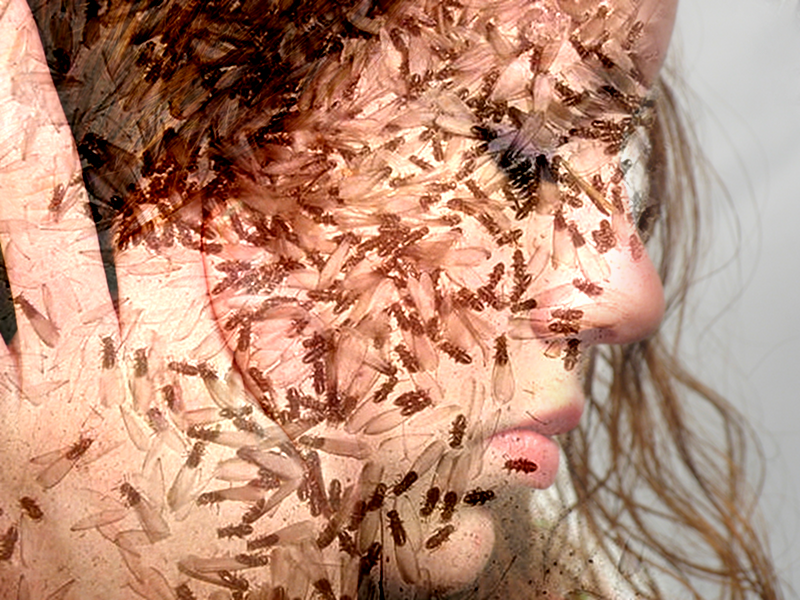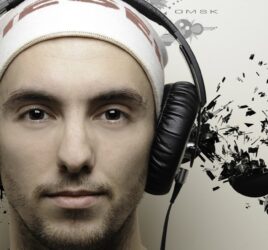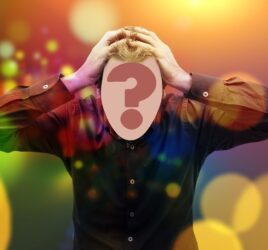
The repulsive body image
Imagine yourself on an exotic vacation with some of your closest friends. One day your friends suggest having a quick bite at a local snack bar, where you order a small salad. As you are sitting there, eating the salad, happily chatting with your friends, you notice a strange feeling in your mouth and stop chewing. Something is moving on your tongue! Without thinking you spit out the bite, only to find that you have been chewing on a living cockroach!
Disgust is an emotion all too familiar to us. From an evolutionary perspective, disgust acts as a mechanism motivating us to stay away from contaminants that threaten health and survival. While generally considered to be an adaptive emotion, experiences of disgust can become detrimental when people come to associate them with aspects of their own bodies. These bodily aspects may refer to physical attributes that signal disease or bad reproductive quality, or that violate cultural standards of beauty (e.g., body fat, acne; Powell, Simpson, & Overton, 2015).
“experiences of disgust can become detrimental when people come to associate them with aspects of their own bodies”
Some life experiences can facilitate the development of disgust towards the self or one’s body. For example, victims of sexual abuse are often left with a feeling of internal dirtiness for years after the abuse. This feeling of internal dirtiness may arise because the victim’s body has become objectified through the abuse by being treated as a tool for the perpetrator’s urges (e.g., Talmon & Ginzburg, 2016).
In a weaker form, objectification is common in today’s society. The female body in particular is appraised as an object, to be evaluated based on whether it meets a certain unrealistic beauty ideal. Any natural body functions and characteristics that fall short of that ideal are being condemned as offensive (e.g., body hair, body fat, menstruation, perspiration).
“Some life experiences can facilitate the development of disgust towards the self or one’s body.”
Young women are exposed to an objectifying environment on a daily basis. This may take the form of an omnipresent display of perfectly photo-shopped models in the media, or magazines telling women that happiness is contingent upon losing those last few pounds before the summer. Other forms of objectification may refer to exposure to body-related teasing, to catcalling on the streets, or even to sexual harassment at the working place (as made explicit by the recent #metoo movement).
Repeated exposure to those objectifying appraisals may result in women internalizing a view of their bodies as objects. This internalized objectification may promote developing a disgust response (similar to the one you might have felt when reading the story about the cockroach) to aspects of own body parts that are already ‘disgust-prone’, i.e. that fall short of the beauty ideal, such as belly fat (cf. Moncrieff-Boyd, Byrne, & Nunn, 2014).
“repeated exposure to those objectifying appraisals may result in women internalizing a view of their bodies as objects”
Although not much is known yet about the experience of disgust in response to the own body, it has been well documented that many (young) women have a negative image of their own bodies (e.g., Al Sabbah et al., 2009). This means that they over-evaluate the importance of their appearance, and are pre-occupied as well as dissatisfied with their shape and weight. Such a negative body image has a negative impact on mental and physical wellbeing, by causing psychological suffering and inviting unhealthy and possibly pathological eating behavior.
My PhD project started in September 2017 and is supervised by Dr Ineke Wessel, Dr Klaske Glashouwer, and Prof Peter de Jong. In my project, I am investigating whether a negative body image includes feelings of disgust towards the own body, and whether the adversity inherent in the emotional experience of disgust drives the persistence and amplification of such a loathsome body image. I plan to share some of the results of my research in due course!
“I am investigating whether a negative body image includes feelings of disgust towards the own body”
References
Al Sabbah, H., Vereecken, C. A., Elgar, F. J., Nansel, T., Aasvee, K., Abdeen, Z., & … Maes, L. (2009). Body weight dissatisfaction and communication with parents among adolescents in 24 countries: international cross-sectional survey. BMC Public Health, 952. doi:10.1186/1471-2458-9-52
Moncrieff-Boyd, J., Byrne, S., & Nunn, K. (2014). Disgust and Anorexia Nervosa: confusion between self and non-self. Advances In Eating Disorders, 2(1), 4-18.
Powell, P. A., Simpson, J., & Overton, P. G. (2015). An introduction to the revolting self: Self-disgust as an emotion schema. In P. A. Powell, P. G. Overton, J. Simpson, P. A. Powell, P. G. Overton, J. Simpson (Eds.), The revolting self: Perspectives on the psychological, social, and clinical implications of self-directed disgust (pp. 1-24). London, England: Karnac Books.
Talmon, A., & Ginzburg, K. (2016). The nullifying experience of self-objectification: The development and psychometric evaluation of the Self-Objectification Scale. Child Abuse & Neglect, 6046-57. doi:10.1016/j.chiabu.2016.09.007
Note
Image by John LeMasney licenced under CC BY 2.0.



